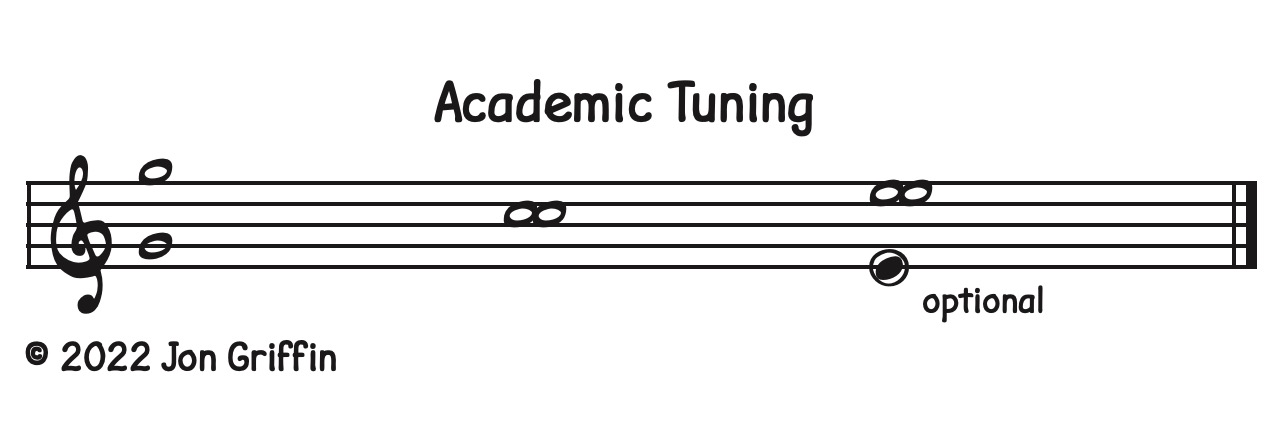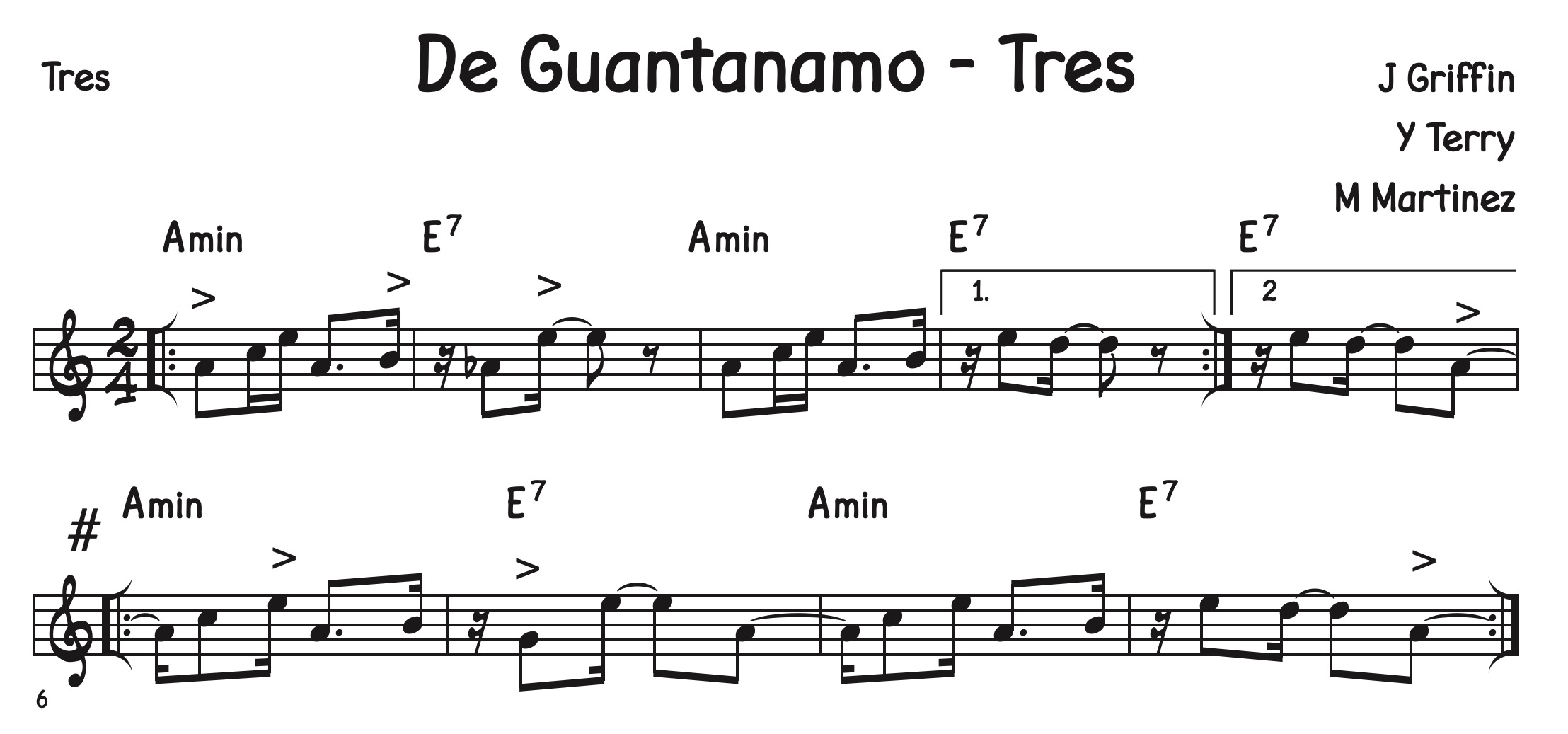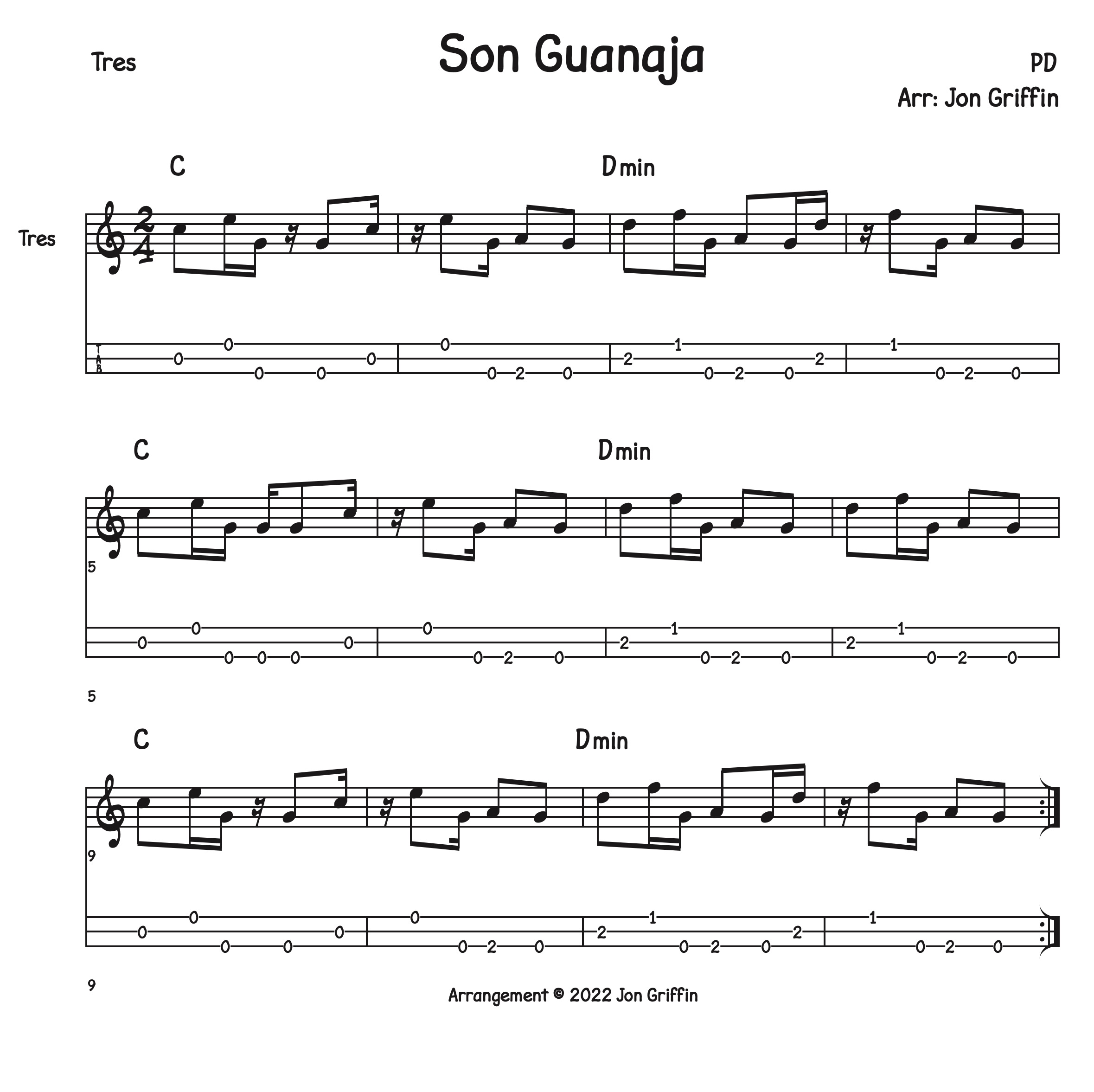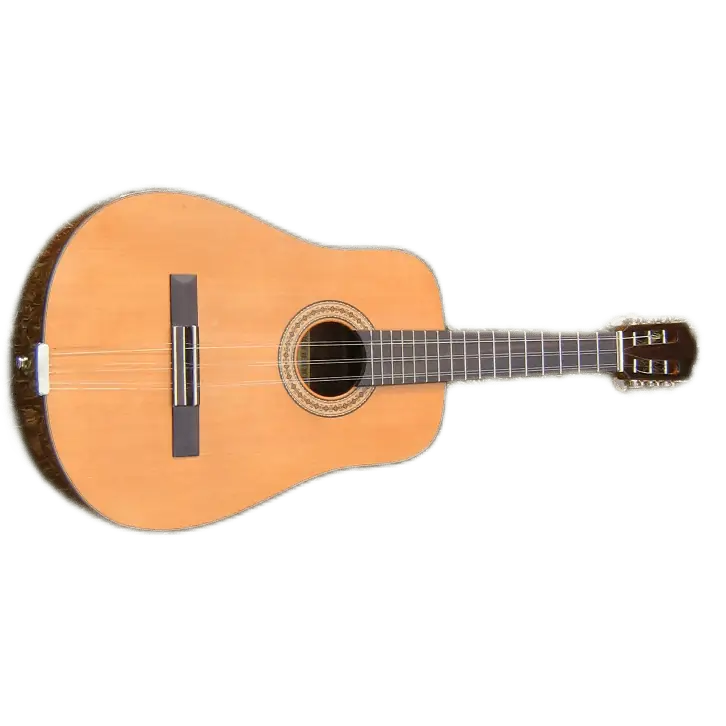The first thing to understand about the Cuban tres is that it is a rhythm instrument. Even though it looks like a guitar, the actual playing of it is rhythmic with melodic lines.
Chords are seldom “strummed”, and in many styles the Cuban tres strengthens the melody line
a 3rd or a 6th above with rhythmic fills in between.
Tuning
I have done more research on all things Cuban tres, and I’ve changed my terminology on the tuning. According to the book, Guitarra Escuela del Tres Cubano (Piñero & Saavedra, 1985), the most used tuning is A D F# (which I previously called the “modern” tuning).
To be honest, I’m not sure there is a “modern” or “traditional” tuning. I have found that in music schools, they teach the tres with the open C (G C E) tuning. The E string is the same as a guitar high E. I will call this “academic tuning”
It also seems the farther east you go, treseros prefer the open D (A D F#) tuning. I can say in my time in Havana, most of the treseros play in open C, but that seems to be changing. I haven’t been to the music schools in Havana in many years, so I’m not sure what tunings they are teaching now.
Also note that some treseros tune the high string with an octave below (i.e. the A or G string depending on your tuning).

Cuban tres academic tuning (© Jon Griffin)

Cuban tres popular tuning (© Jon Griffin)
Seldom used tunings
(Piñero & Saavedra, 1985), also mention some other tunings, some of which are impractical, but in case you are interested, here are a few.
- The treseros playing Punto Guajiro sometimes use a tuning they call transporta’o el medio (transported to the middle) it is A C# F#.

Cuban tres punto guairo tuning (© Jon Griffin)
- Another is called afinación al dos (tuning to two). If you press on the second fret of the fist string you get the octave of A . It is A D G.

Cuban tres afinación tuning (© Jon Griffin)
- Some of the new generation of treseros are tuning to mimic the guitar, G B E.

Cuban tres tuning like a guitar (© Jon Griffin)
History of the Cuban Tres
No one is quite sure when or where the first Cuban tres was developed. In order to fully understand the history of the tres Cubano, I have transcribed a conversation I had with Dr. Olavo Alen Rodriguez at the Centro Investigación y Desarrollo de la Música Cubana (CIDMUC), in Havana Cuba. This interview took place in November 2003.
Interview with Olavo Alen Rodriguez in Cuba
Jon: When was the Cuban tres born?
Olavo: Musical instruments aren’t born at a certain time like Human Beings. They begin forming a new type of musical instrument. That doesn’t happen in only one place. It happens in different places at the same time.
So, the most accurate information that can be obtained for the Cuban tres, is that it was born in the area of the Sierra Maestra Mountains*. That means in Oriente (Eastern Cuba), around the mid to late 18th Century and it had its ancestry in the Spanish Guitar.
The big difference between the Cuban tres and the guitar is not in the shape or the size. Like the guitar, the Cuban tres is also a plucked string instrument. The major difference is in the playing of the instrument. The Cuban tres is a plucked string instrument that is played like a drum. You almost never play chords with a Cuban tres. You can do it, but that is not the traditional way to play the Cuban tres.
What would you play? tat, ta, tat, ta, ta, tat (sings rhythm), you can bring that to a drum. Or, the other way around. It’s like doing a polyrhythmic effect with the whole thing. That is the concept of playing with drum ensembles.
Jon: And probably somebody had a guitar with only 3 strings on it.
Olavo: Exactly, and probably that happened in different ways in different places at about the same time. Until they all agreed that this is now a new instrument, or someone said “that is not a guitar”. Or, he was using a guitar for another purpose, for example an instrument was missing and the part was played on the guitar and he said “I have too many strings”, so he took some away and then doubled them. I don’t know how it came to be, I don’t think anybody knows. At that time people weren’t interested in looking for that kind of thing (ethnomusicology), and they didn’t have any way to record it. That is the most accurate information that we have.
Music Notation Examples
Example 1
This first example is from the CD Con Sabor Al Guaso, De Guantanamo, and features an almost Changüi feel.
It is not really Changüi for several reasons.
- The bongo is playing martillo.
- The phrase starts on the beat, where Changüi would start with a sixteenth note pickup beat.
- There is a 2-3 clave pattern where Changüi would really have quarter notes (clave hadn’t been invented yet!).
Having said that, if you listen to the entire track, you will find that there are many elements of Changüi in the Tres part. Especially the solo sections.

De Guantanamo tres part (© Jon Griffin)
Example 2
The second example (also from Con Sabor Al Guaso) is a son pattern from the Baracoa region of Cuba.
It is still considered Cuban Son because there is no montuno section. The syncopation is not as prevalent as in the prior son, and this hints of a more modern interpretation.

Cuban Son tres part (© Jon Griffin)
Audio
Coming Soon
Music Styles
Related Products
Cuban Masters Series - Cuban Tres
Updated October 28 2022 - added tunings and define “academic tuning” etc.

Comments